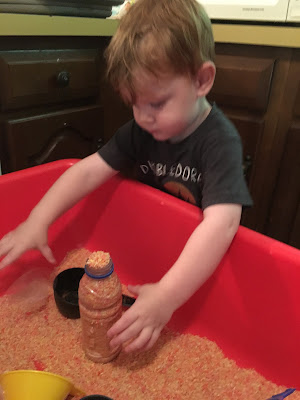Friend "Sandwich" engaged with these pieces of pipe for quite awhile today. After identifying these new toys in the Toy and Puzzle Area during Greeting Time, he knew exactly what he wanted to do when it was Work Time! His plan was to go and work with pipes. He figured out how to connect them on his own.
We talked about how pipes bring water to our homes, like the kitchen sink, bathtubs, toilets, and even the garden hoses.
We used these pictures during Recall Time to invite Friend "Sandwich" to tell his friends about his work. After completing his pipes project, he said, "Ta-da! Come take a picture!" During Recall Time he told us about how this pipe system is for the sprinklers.
Cool engineering brain right?!






































